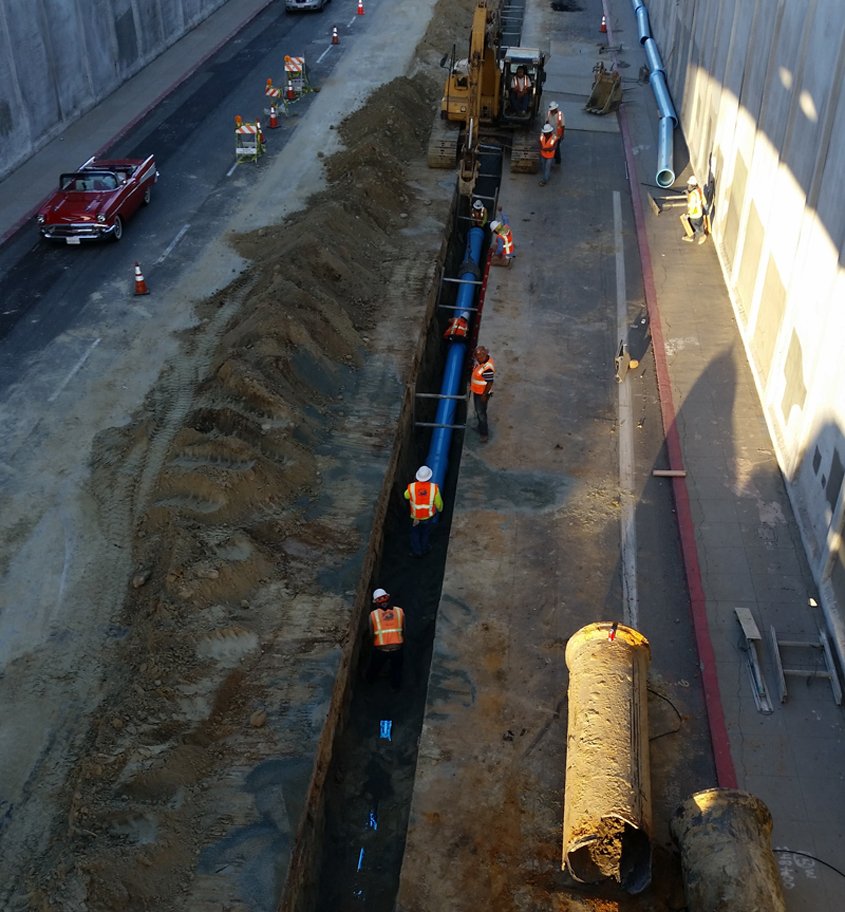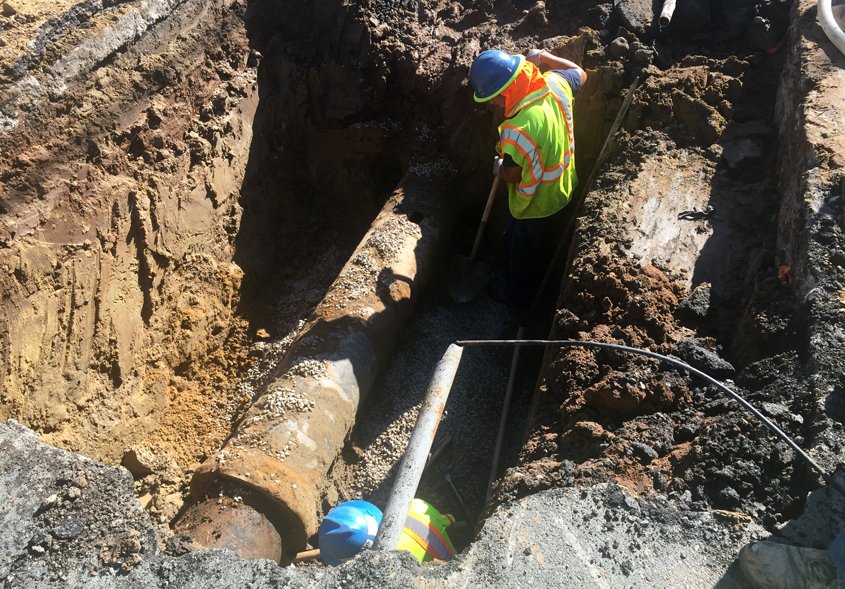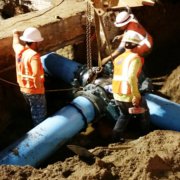Increased maintenance efforts by the City of San Diego of its water system infrastructure is paying off for ratepayers. For the fourth year in a row, the number of water main breaks has decreased in the City of San Diego. Thirty-three water main breaks were reported in 2020, the lowest total in more than 15 years.
The City credits its aggressive multi-year program to replace aging pipelines for bringing the numbers far below the peak of 131 breaks in 2010.
“The City’s Public Utilities Department has worked very hard to improve the reliability of our water system infrastructure,” said Shauna Lorance, director of public utilities. “Our citizens benefit greatly from fewer main breaks because it means less water loss and lower emergency repair costs.”
Fifty-five miles of pipeline replaced in next four years

Crews replace old cast iron pipe with new PVC pipe along Park Boulevard. Photo: City of San Diego
San Diego’s continuing program to replace old cast iron water mains has played a major part in the decrease in breaks. Some cast-iron pipes had been in service for more than a century. Since 2013, the city has replaced approximately 180 miles of water pipelines. By 2025, the last 55 miles of cast iron water mains are scheduled to be replaced with water mains made of durable polyvinyl chloride.
Water infrastructure maintenance programs also deliver a benefit to our region’s overall economy. According to the Economic Policy Institute, $188.4 billion spent on water infrastructure investments over five years would yield $265 billion in economic activity and create 1.9 million jobs.
“Improving and maintaining our water infrastructure is an important part of our commitment to serving our customers,” said Lorance. “We will continue to provide reliable water services our customers deserve.”

City of San Diego public utilities crew members replace an aging cast iron water pipe at 5th and Robinson in Hillcrest. Photo: City of San Diego
City of San Diego public utilities crews routinely oversee preventative maintenance work to help determine potential leaks and breaks before they occur. Private contractors have completed the bulk of the pipeline replacement projects under the direction of the City’s Engineering and Capital Projects Department.





